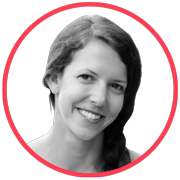
A distant relative of mine died in 2009. He lived his entire life in one city and there was no doubt that he’d be buried precisely there. The ashes of my other relatives were scattered. My family holds such a ritual. It was entirely different in my husband’s family. His grandmother’s body was donated to an anatomical theater.
These experiences caused me to think about rituals that accompany death in various cultures. I wanted to understand the nature of grief and why people are inclined to attach themselves to a particular place. The series “Temporary Container” brings together photographs of places where Americans most often scatter ashes.
I am interested in resarching the relatonship of man and his surrounding world. I hope that my photographs force the viewer to think about their ties to various places and the history of those places. I want for them to study the context. For example, Haleakala National Park on the island of Maui in Hawaii is simply a tourist spot for many people. But it has more meaning for the island’s natives. The ashes of thousands of settlers were scattered there.
{“img”: “/wp-content/uploads/2014/09/hepner_01.jpg”, “alt”: “Похоронный ритуал в проекте Эбби Хепнер” },
{“img”: “/wp-content/uploads/2014/09/hepner_02.jpg”, “alt”: “Похоронный ритуал в проекте Эбби Хепнер” },
{“img”: “/wp-content/uploads/2014/09/hepner_03.jpg”, “alt”: “Похоронный ритуал в проекте Эбби Хепнер” },
{“img”: “/wp-content/uploads/2014/09/hepner_04.jpg”, “alt”: “Похоронный ритуал в проекте Эбби Хепнер” },
{“img”: “/wp-content/uploads/2014/09/hepner_05.jpg”, “alt”: “Похоронный ритуал в проекте Эбби Хепнер” },
{“img”: “/wp-content/uploads/2014/09/hepner_06.jpg”, “alt”: “Похоронный ритуал в проекте Эбби Хепнер” },
{“img”: “/wp-content/uploads/2014/09/hepner_07.jpg”, “alt”: “Похоронный ритуал в проекте Эбби Хепнер” },
{“img”: “/wp-content/uploads/2014/09/hepner_08.jpg”, “alt”: “Похоронный ритуал в проекте Эбби Хепнер” }
I learned about the places where ashes are most often scattered from funeral agencies and specialized forums.
More and more Americans move from city to city, constantly changing their environment like nomads. Earlier, it was different: people gave birth, lived and died in the same place. I think it’s that very change, plus expensive burials, that made cremation so popular. Each culture explains death and deals with it in its own way. The dead were buried for all of Japan’s history, while only very wealthy families could afford cremation. Yet this rite began to gain populairty after the Second World War.
The second part of the Temporary Container series consists of Lenticular Postcards with two images. I wanted to make photographs to remind us that we’re not here forever. A cardboard box with ashes symbolizes the perishable nature of the human body, and postcards are the mass production of disposable things. An exhibit of my prints was held at the Arts Museum at the University of New Mexico in January 2014. The viewer had to look at the photos from different angles to see everything that was depicted there.
Photography tuahgt me to look at the world not so superficially. It has made me involved, helps me to find a common language with people and forces me to look for what can’t be seen with our eyes. I like conceptual projects that present a challenge. I don’t like when people divide the world into absolute good and evil, depicting it in black-and-white terms and denying the presence of everything in between.
People don’t like to talk about death. It’s an unpleasant theme for many so I first show them my photos — once they find something that catches their attention, they become more talkative.
{“img”: “/wp-content/uploads/2014/09/hepner_09.jpg”, “alt”: “Похоронный ритуал в проекте Эбби Хепнер” },
{“img”: “/wp-content/uploads/2014/09/hepner_10.jpg”, “alt”: “Похоронный ритуал в проекте Эбби Хепнер” },
{“img”: “/wp-content/uploads/2014/09/hepner_11.jpg”, “alt”: “Похоронный ритуал в проекте Эбби Хепнер” },
{“img”: “/wp-content/uploads/2014/09/hepner_12.jpg”, “alt”: “Похоронный ритуал в проекте Эбби Хепнер” },
{“img”: “/wp-content/uploads/2014/09/hepner_13.jpg”, “alt”: “Похоронный ритуал в проекте Эбби Хепнер” },
{“img”: “/wp-content/uploads/2014/09/hepner_14.jpg”, “alt”: “Похоронный ритуал в проекте Эбби Хепнер” },
{“img”: “/wp-content/uploads/2014/09/hepner_15.jpg”, “alt”: “Похоронный ритуал в проекте Эбби Хепнер” },
{“img”: “/wp-content/uploads/2014/09/hepner_16.jpg”, “alt”: “Похоронный ритуал в проекте Эбби Хепнер” }




